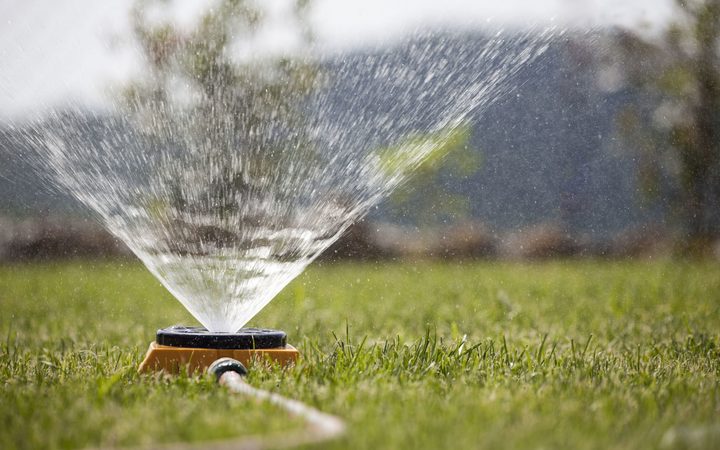Five hours later and this
has not appeared as an article on the Radio New Zealand website but
was part of the 7 am news bulletin.
Firefighters
warn climate change putting New Zealand at greater risk of large
fires
New
Zealand is unprepared for more frequent drought, report warns
30
November, 2018
More
drought could bring disease, power outages and food shortages and New
Zealand isn't ready, a
new report warns.
Although the country has historically been "water-rich", New Zealand is not well-prepared to cope with a future involving more drought in some areas.
Although the country has historically been "water-rich", New Zealand is not well-prepared to cope with a future involving more drought in some areas.
Kiwi
households could be at increased risk of disease due to a
water-shortage induced lack of hygiene, the report says.
The
country could also face shortages of fruit and
vegetables, interruptions to electricity supply, more frequent
watering bans and higher prices – or the introduction of water
charges – in some areas.
The
report raised several questions for further research, one of
which has already developed into a project aims to understand
the future of drought for New Zealand.
It's
a big task but project leader Wageed Kamish from
environmental and engineering consultancy Tonkin and Taylor says
it is achievable.

SUPPLIED
New
Zealand has historically been "water-rich" but the country
is not well-prepared to cope with a future involving more drought, a
new report says.
"Niwa,
our project partner, has already completed a considerable amount of
work on climate change projections and these will provide a good
platform from which to start," he said.
"Although
it is true that farmers and rural communities normally experience the
full effects of a drought, we don't have to look much further than
the recent Day Zero scenario in Cape Town to realise that urban
areas can also be affected by droughts."
Cape
Town, South Africa's second-largest city, was predicted to run out of
water in April this year.
Facing
its worst drought in a century, the city of four million cut its
water usage by nearly half and narrowly avoided becoming the first
major city in the world to run completely dry.
Kamish
said as New Zealand's climate changed, water supply systems would
have to be adapted accordingly.
"[That]
may include new sources, new technologies, increased storage capacity
and better management of water usage.
"In
parallel, we need to carefully manage the quality of existing and
potential sources now, so as not to jeopardise them for future use,"
he said.
"The
primary key to this is that we adapt our water systems well enough in
advance to avoid a Day Zero scenario.
"Adaptation
may take several years, so in many cases the planning process needs
to start right now."

SUPPLIED
Increased
drought could lead to higher prices for water – or the introduction
of water charges – in some places.
The report
was produced as a result of a Deep South Dialogue, run by Motu
Economic and Public Policy Research.
The
dialogue brought together researchers and sector representatives to
map current knowledge about how drought will impact New Zealand as
the climate changes, and to identify critical knowledge gaps that
need to be filled if the country is to adapt.
For
example, the report suggested New Zealanders needed a better
understanding of the likely incidence of multi-regional drought,
and the likely nationwide changes in drought incidence.
How
future droughts might affect water supply and demand – particularly
for the local food production sector, which competes for water with
other users – and the impact on vulnerable
communities also needed to be looked at.
****
Instead,
like Soviet citizens in the 70's we have to read, Pravda-like between
the lines.
Except
that no one is capable of that.
Napier
residents will have to cut back on their sprinkler and hose use from
Monday.

The city council has moved to level two water restrictions, because demand has increased sharply over the past few days.
Hoses
and sprinklers can only be used between 6am and 8am, and 7pm and 9pm,
it said.
And
even that use will be restricted to even numbered houses on
even-number dates, and to odd numbered houses on odd-numbered date.
Between the above and my own observations at the bottom of the North Island I can say I simply DO NOT BELIEVE this data from NIWA which shows everything as 'normal',more or less.



The
unreported marine heatwave
Earlier
(a couple of months ago) NZ media mentioned the marine heatwave at a
time when it was much, much less serious.
Now
the Tasman is warming up rapidly, (and this is noticeable
week-after-week) and nothing is being reported
When I looked this is all that I could find about this that does not date back to November. Even if NIWA employees are forced to remain silent officially it appears they can tweet about thngs.
"Above average, yet very refreshing"
Very nice! A pity about the fish that cannot adapt to such changes any more than koalas and bats can adapt to unprecedented heatwaves n Australia.
This is how things looked back in November.
And (from a different source) from November, 2018 - 13 months ago.
When I looked this is all that I could find about this that does not date back to November. Even if NIWA employees are forced to remain silent officially it appears they can tweet about thngs.
"Above average, yet very refreshing"
Very nice! A pity about the fish that cannot adapt to such changes any more than koalas and bats can adapt to unprecedented heatwaves n Australia.
This is how things looked back in November.
And (from a different source) from November, 2018 - 13 months ago.
Instead
this is what the media CAN talk about over the holiday season







No comments:
Post a Comment
Note: only a member of this blog may post a comment.